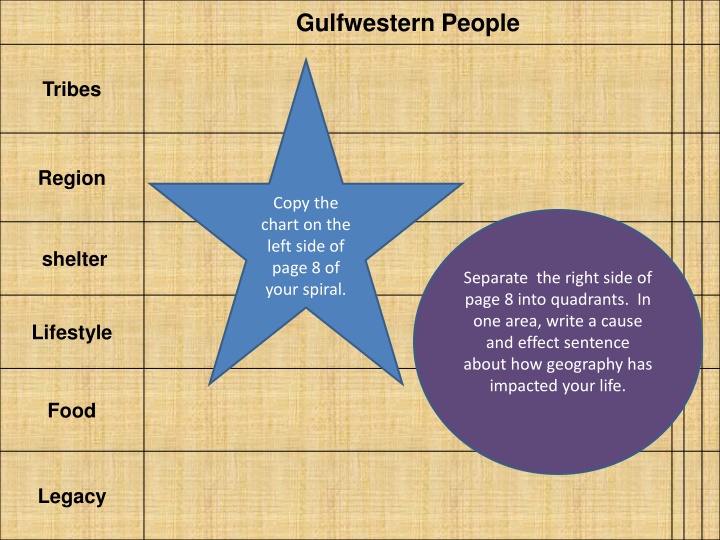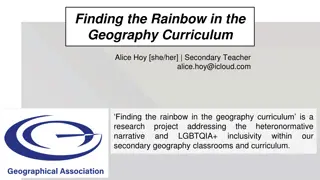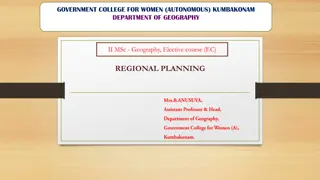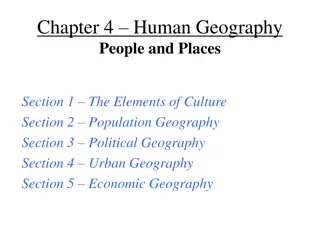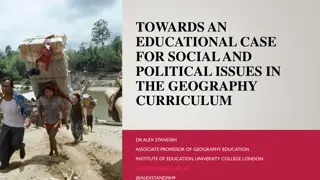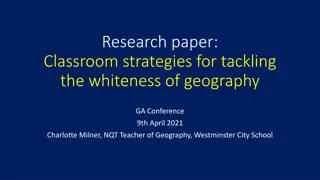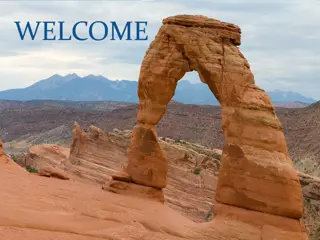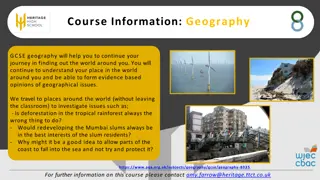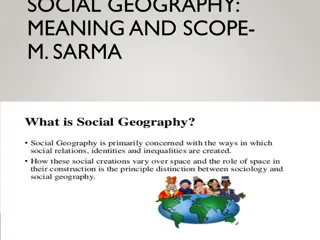Impact of Geography on Gulfwestern People's Lives
The Gulfwestern People, including Coahuiltecans, Karankawas, and Atakapans, lived in South Texas and along the Gulf Coastal Plains, relying on the land and water for survival. They utilized various resources such as fish, deer, berries, pecans, and prickly pear cactus to sustain themselves in a harsh environment. The proximity to water significantly influenced their lifestyle, food sources, and overall legacy, shaping how they lived and interacted with their surroundings.
Download Presentation

Please find below an Image/Link to download the presentation.
The content on the website is provided AS IS for your information and personal use only. It may not be sold, licensed, or shared on other websites without obtaining consent from the author.If you encounter any issues during the download, it is possible that the publisher has removed the file from their server.
You are allowed to download the files provided on this website for personal or commercial use, subject to the condition that they are used lawfully. All files are the property of their respective owners.
The content on the website is provided AS IS for your information and personal use only. It may not be sold, licensed, or shared on other websites without obtaining consent from the author.
E N D
Presentation Transcript
Gulfwestern People Tribes Region Copy the chart on the left side of page 8 of your spiral. shelter Separate the right side of page 8 into quadrants. In one area, write a cause and effect sentence about how geography has impacted your life. Lifestyle Food Legacy
The Gulfwestern People Coahuiltecans, Karankawas & Atakapans
First things first One very important fact about this so-called tribe. There is no one "Coahuiltecian" tribe or culture. It never existed. There is a Coahuiltecan group or region in South Texas made up of over a hundred similar Indian cultures. These Natives of the Coahuiltecan region shared very similar ways of living. But they were not one tribe or culture. Like the Coahuiltecans, the Karankawa Indians were several band or maybe even several tribes. We are not sure, because much of the history of the Karankawa is lost.
The Gulfwestern People lived throughout south Texas and in the lagoons and bays along the Gulf Coastal Plains .
http://t0.gstatic.com/images?q=tbn:ANd9GcQ2eloUY18Qdj1RBQVZQ9Kv9IHDV2zMoOAu0Z-NxSUiraQTk-tIeDQSmIFlhttp://t0.gstatic.com/images?q=tbn:ANd9GcQ2eloUY18Qdj1RBQVZQ9Kv9IHDV2zMoOAu0Z-NxSUiraQTk-tIeDQSmIFl Turn to your shoulder buddy You have 30 seconds to answer the following. How did living near water effect these people s lives?
Karankawas would seasonally set up large fishing camps to collect a variety of fish and make tools. Coahuiltecans often used thin branches bent to the ground and covered with animal skins or grasses. Texasbeyondhistory.net and Texasindians.com painting of a large Karankawa fishing camp
These people were known to live off the land and eat seasonally, meaning they could go days to months with very little to no food. In addition to fishing, they hunted everything from deer to mice and gathered anything from berries to two of their favorite foods the pecan and the prickly pear cactus. Texasbeyondhistory.net
Hunters sometimes hunted deer using surround fires. Texasbeyondhistory.net With bows and arrow ready, a Karankawas man in a dugout canoe watches for passing fish off the Texas coast.
On the right side of page 7in another quadrant Copy and complete the following sentence: For three weeks now, I have had nothing to eat but (fill in the blank with your least favorite food), and I am dying for (fill in the blank with the food you crave.) ex: For three weeks now, I have had nothing to eat but beans and rice, and I am dying for pizza.
Meeting the Spanish The Spanish explorer Cabeza de Vaca met the Karankawa group of people and lived with them for many months. When he and his friends went back they wrote The Relacion, an account of their time with the group. He described them as tall (near 6 ft), muscular, the men stark naked, with lower lip and nipples peirced, covered in alligator grease (to fight off mosquitos), happy, and generous. Indigenouspeople.net
An excerpt No foods were continuously plentiful, when the harvest was good they gorged at repletion. Unique in their gluttony they eat locusts, lice, even human flesh raw meat, bear s fat passion for spoiled food .In spring they might subsist exclusively on oysters, then for a month they ate blackberries. The Relacion Cabeza de Vaca
Meeting the French The French explorer La Salle shipwrecked near Galveston. Texasbeyondhistory.com
What happened to these people?? The Karankawa are all gone now. They disappeared sometime in the early 1800s. In 1840 only about 100 Karankawas were left. By 1850 they were gone. Probably from disease. Their only survivoring Coahuiltecans today are the many Native Texan Hispanic families in South Texas. Many families who are members of the Catholic Churches at the old missions in San Antonio can trace their families back to Coahuiltecan ancestors. The few surviving Coahuiltecans in other parts of South Texas were absorbed into the larger Hispanic/Mexican culture of South Texas. Almost any Hispanic family in South Texas who can trace their ancestors back to the early 1800s probably has Coahuiltecan blood in the family. The culture and languages these people spoke are completely gone now. Texasindians.com
Gulfwestern People Specific Native American Tribes Geographic Region Inhabited In the last quadrant left on the right side of page 7 write 3 ways the Gulfwestern had to adapt to their geography 2 tribes in this culture 1 explorer they met Types of shelter Lifestyle Food Legacy
